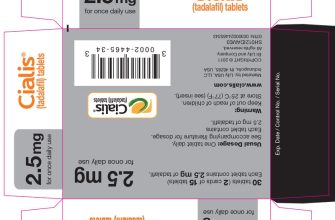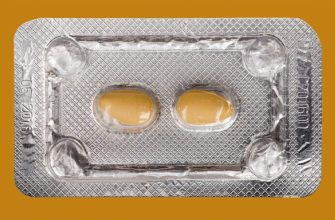Amoxicillin 500mg is often prescribed for urinary tract infections (UTIs), but it’s crucial to understand its role and limitations. This antibiotic targets bacteria causing many UTIs, offering relief from symptoms like burning during urination and frequent urges. However, its effectiveness depends on the specific bacteria involved. A doctor will determine if Amoxicillin is the right choice for your particular infection.
Always follow your doctor’s instructions precisely regarding dosage and duration of treatment. A typical course lasts 7-10 days. Completing the full course, even if you feel better sooner, is vital for preventing recurrence and antibiotic resistance. Ignoring this advice could prolong your illness and lead to more serious complications.
Important Note: Amoxicillin is not effective against all UTI-causing bacteria. Some strains may be resistant. If your symptoms don’t improve within a few days or worsen, seek immediate medical attention. Your doctor might need to perform a urine culture to identify the bacteria and prescribe a different antibiotic. Never self-medicate; always consult a healthcare professional for diagnosis and treatment.
Side effects, though uncommon, can include nausea, diarrhea, and allergic reactions. Inform your doctor if you experience any unusual symptoms during treatment. This information is for educational purposes and does not constitute medical advice. Consult a healthcare provider for personalized guidance on UTI treatment.
- Amoxicillin 500 for UTI: A Comprehensive Guide
- Dosage and Duration
- Potential Side Effects
- Alternatives to Amoxicillin
- Preventing Future UTIs
- When to Seek Medical Attention
- Understanding Amoxicillin’s Role in UTI Treatment
- Targeting Specific Bacteria
- Dosage and Duration
- Potential Side Effects
- When Amoxicillin Might Not Be Suitable
- Important Note
- Alternatives to Amoxicillin
- Dosage and Administration of Amoxicillin 500mg for UTIs
- Common Side Effects and How to Manage Them
- Digestive Issues
- Skin Reactions
- Other Side Effects
- Managing Side Effects
- When to Seek Medical Attention
- When to Seek Immediate Medical Attention
- Signs Requiring Urgent Care
- Potential Drug Interactions with Amoxicillin
- Alternatives to Amoxicillin for UTI Treatment
- Complementary Therapies to Support UTI Recovery
- Preventing Future UTIs After Amoxicillin Treatment
Amoxicillin 500 for UTI: A Comprehensive Guide
Amoxicillin 500mg is often prescribed for uncomplicated urinary tract infections (UTIs). However, its effectiveness depends on the specific bacteria causing the infection. Your doctor will consider your medical history and test results before prescribing.
Dosage and Duration
The typical dosage is 500mg three times daily for 7-14 days. Always follow your doctor’s instructions precisely. Never adjust the dosage or duration without consulting your physician. Incomplete treatment can lead to antibiotic resistance and recurring infections.
Potential Side Effects
Common side effects include diarrhea, nausea, and vomiting. More serious, though rare, side effects include allergic reactions (rash, itching, swelling, difficulty breathing). Seek immediate medical attention if you experience any severe reactions. Inform your doctor about any pre-existing conditions or medications you are taking.
Alternatives to Amoxicillin
If you’re allergic to penicillin or amoxicillin proves ineffective, your doctor may prescribe alternative antibiotics, such as nitrofurantoin, trimethoprim-sulfamethoxazole, or ciprofloxacin. They might also conduct further tests to identify the precise bacteria and determine the most suitable treatment.
Preventing Future UTIs
Drink plenty of fluids, especially water, to flush out bacteria. Urinate frequently, and always wipe from front to back after using the toilet. Cranberry juice may also help, although scientific evidence supporting its efficacy remains limited. Discuss preventative measures with your doctor.
When to Seek Medical Attention
Contact your doctor immediately if your symptoms worsen, don’t improve after a few days of treatment, or you experience high fever, severe pain, or blood in your urine. Prompt medical attention is crucial for effective management.
Understanding Amoxicillin’s Role in UTI Treatment
Amoxicillin effectively combats many common UTI-causing bacteria. It works by preventing bacteria from building cell walls, ultimately leading to their death. This makes it a suitable first-line treatment for uncomplicated UTIs.
Targeting Specific Bacteria
Amoxicillin is particularly effective against Escherichia coli (E. coli), a frequent culprit in UTIs. However, its efficacy varies depending on the specific bacterial strain and its antibiotic resistance profile. Some strains of E. coli and other bacteria may be resistant, rendering Amoxicillin ineffective.
Dosage and Duration
- Your doctor determines the correct dosage and treatment duration based on your specific condition and the severity of your infection. Typical courses last 7-10 days.
- Strictly adhere to your prescribed dosage and complete the full course, even if you feel better before finishing. Stopping early increases the risk of recurrence and promotes antibiotic resistance.
Potential Side Effects
Common side effects include diarrhea, nausea, and vomiting. Severe allergic reactions, although rare, can occur. Seek immediate medical attention if you experience symptoms like hives, swelling, or difficulty breathing.
When Amoxicillin Might Not Be Suitable
- Penicillin allergy: Amoxicillin is a penicillin antibiotic; those with penicillin allergies should avoid it.
- Complicated UTIs: Amoxicillin may be insufficient for complicated UTIs, requiring stronger antibiotics.
- Antibiotic resistance: If previous Amoxicillin treatments have failed, alternative antibiotics are necessary.
Important Note
This information is for educational purposes only and does not replace professional medical advice. Always consult your doctor or other qualified healthcare provider for diagnosis and treatment of a UTI. They will assess your specific situation and determine the most appropriate course of action.
Alternatives to Amoxicillin
If Amoxicillin is not suitable, your doctor may prescribe alternative antibiotics, such as nitrofurantoin, trimethoprim-sulfamethoxazole, or cephalosporins. The choice depends on several factors, including the type of bacteria causing the infection and your medical history.
Dosage and Administration of Amoxicillin 500mg for UTIs
Typically, doctors prescribe 500mg of amoxicillin every 8 hours for uncomplicated UTIs. This means you take three doses daily, spaced evenly throughout the day. A common regimen involves taking one dose in the morning, one in the afternoon, and one in the evening.
The duration of treatment usually lasts 7-10 days. Always complete the entire course of antibiotics, even if you feel better before finishing all the pills. Stopping early might lead to a recurrence of the infection.
Take amoxicillin with a full glass of water. Avoid taking it with dairy products, such as milk or yogurt, as this can reduce absorption. It’s generally safe to take amoxicillin with food, which can help minimize stomach upset.
Your doctor might adjust the dosage or duration based on your specific condition and response to treatment. Always follow your doctor’s instructions carefully. If you experience any severe side effects, contact your healthcare provider immediately.
This information is for guidance only and does not replace professional medical advice. Always consult your doctor or pharmacist before starting any medication.
Common Side Effects and How to Manage Them
Amoxicillin, while effective for UTIs, can cause side effects. The most common are diarrhea, nausea, and vomiting. Drink plenty of fluids to combat dehydration if you experience these. If diarrhea is severe or persistent, contact your doctor.
Digestive Issues
For mild nausea, try eating small, frequent meals. Avoid greasy or spicy foods. Over-the-counter antacids may help with heartburn. Persistent or severe nausea warrants medical attention.
Skin Reactions
Less common but potentially serious are skin rashes or itching. Stop taking amoxicillin immediately and contact your doctor if this occurs. This could indicate an allergic reaction.
Other Side Effects
You might experience a yeast infection (thrush) particularly if you’re a woman. Consider using over-the-counter antifungal creams if this happens. If you develop a high fever or severe abdominal pain, seek immediate medical care. These symptoms might point to something more serious.
Managing Side Effects
| Side Effect | Management |
|---|---|
| Diarrhea | Increased fluid intake; contact doctor for severe diarrhea |
| Nausea/Vomiting | Small, frequent meals; antacids; contact doctor for persistent symptoms |
| Rash/Itching | Stop amoxicillin; contact doctor immediately |
| Yeast Infection | Over-the-counter antifungal cream; consult doctor |
| High Fever/Severe Abdominal Pain | Seek immediate medical attention |
When to Seek Medical Attention
Always consult your doctor if side effects are severe, persistent, or worsen. This ensures you receive appropriate treatment and management.
When to Seek Immediate Medical Attention
If you experience severe abdominal pain, high fever (over 101°F or 38.3°C), chills, or signs of dehydration (dark urine, decreased urination), seek immediate medical attention. These symptoms may indicate a more serious infection requiring stronger antibiotics or hospitalization.
Signs Requiring Urgent Care
Don’t delay seeking help if you notice blood in your urine, persistent vomiting, or worsening symptoms despite taking amoxicillin for 48-72 hours. These can signal complications requiring immediate intervention. Allergic reactions, like hives, swelling, or difficulty breathing, are medical emergencies and demand immediate attention. Contact emergency services immediately.
Persistent symptoms after completing the prescribed amoxicillin course also warrant a follow-up appointment with your doctor. This could mean the infection isn’t fully resolved or a different treatment is needed.
Potential Drug Interactions with Amoxicillin
Amoxicillin, while generally safe, can interact with certain medications. Always inform your doctor or pharmacist about all medications you are taking, including over-the-counter drugs, supplements, and herbal remedies. This helps prevent potentially harmful interactions.
Here are some key examples:
- Oral contraceptives: Amoxicillin may reduce the effectiveness of some birth control pills. Consider using a backup method of contraception while taking amoxicillin and for a few days after completing the course.
- Methotrexate: Amoxicillin can increase the levels of methotrexate in your blood, potentially leading to increased side effects. Close monitoring is needed if you take both medications.
- Warfarin: Amoxicillin may increase the risk of bleeding if you’re on warfarin (a blood thinner). Your doctor will likely monitor your blood clotting time.
- Probenecid: Probenecid, used to treat gout, can increase amoxicillin levels in your blood. Your doctor may adjust your amoxicillin dosage.
Other potential interactions exist. These include medications that affect kidney function, as amoxicillin is primarily eliminated through the kidneys. Always consult your physician or pharmacist if you have any concerns regarding potential interactions with your specific medications.
- Clearly communicate your complete medication list to your healthcare provider.
- Never adjust your medication dosage without consulting a medical professional.
- Report any unusual symptoms, such as allergic reactions or unexpected side effects, to your doctor immediately.
Alternatives to Amoxicillin for UTI Treatment
If amoxicillin isn’t suitable, your doctor might prescribe nitrofurantoin. This antibiotic targets bacteria commonly causing UTIs and is often well-tolerated. However, it’s less effective against some bacteria, so your doctor will consider your specific infection.
Another option is trimethoprim-sulfamethoxazole (TMP-SMX), a combination antibiotic. It’s effective against a broad range of UTI-causing bacteria. However, increasing bacterial resistance necessitates careful consideration of its suitability based on local resistance patterns.
For severe infections or those unresponsive to other treatments, cephalosporins like cefpodoxime or cefixime may be used. These are stronger antibiotics, but carry a higher risk of side effects.
Fosfomycin is a single-dose oral antibiotic that can be a convenient option for uncomplicated UTIs. Its effectiveness varies depending on the bacteria involved.
Always consult your doctor to determine the best antibiotic for your specific UTI. They will consider factors like your medical history, the severity of your infection, and local antibiotic resistance patterns to make the most appropriate recommendation.
Complementary Therapies to Support UTI Recovery
Drink plenty of water. Aim for at least eight glasses a day to flush out bacteria.
Consider cranberry supplements. While not a cure, studies suggest cranberry’s proanthocyanidins may hinder bacterial adhesion to the urinary tract. Look for supplements with a high concentration of PACs and follow dosage instructions.
Increase your intake of probiotics. Beneficial bacteria can help restore balance in your gut, potentially impacting urinary tract health. Opt for yogurt with live cultures or probiotic supplements containing Lactobacillus strains.
Explore D-mannose supplements. This simple sugar may prevent E. coli bacteria from attaching to the bladder wall. Consult your doctor before use, especially if you have diabetes.
Prioritize adequate rest. Your body needs time to heal. Aim for 7-9 hours of quality sleep each night.
Manage stress levels. Stress can weaken your immune system. Practice relaxation techniques like deep breathing or meditation.
Important Note: These complementary therapies should support, not replace, prescribed antibiotics. Always consult your doctor before starting any new supplement or therapy, particularly if you have underlying health conditions or are taking other medications.
Preventing Future UTIs After Amoxicillin Treatment
Drink plenty of water throughout the day. Aim for at least eight glasses to flush out bacteria.
Urinate frequently, especially after sexual intercourse. Holding urine allows bacteria to multiply.
Wipe from front to back after using the toilet. This simple action prevents fecal bacteria from entering the urethra.
Consider cranberry supplements. While not a cure-all, some studies suggest they may help prevent UTIs.
Wear breathable cotton underwear to prevent moisture buildup. Avoid tight-fitting clothing.
Practice good hygiene. Wash your genital area thoroughly, but gently, with soap and water.
If you experience recurrent UTIs, discuss proactive strategies with your doctor. They may recommend preventative antibiotics or other measures.
Always finish your prescribed course of antibiotics, even if you feel better. Stopping early can lead to antibiotic resistance and recurring infections.







